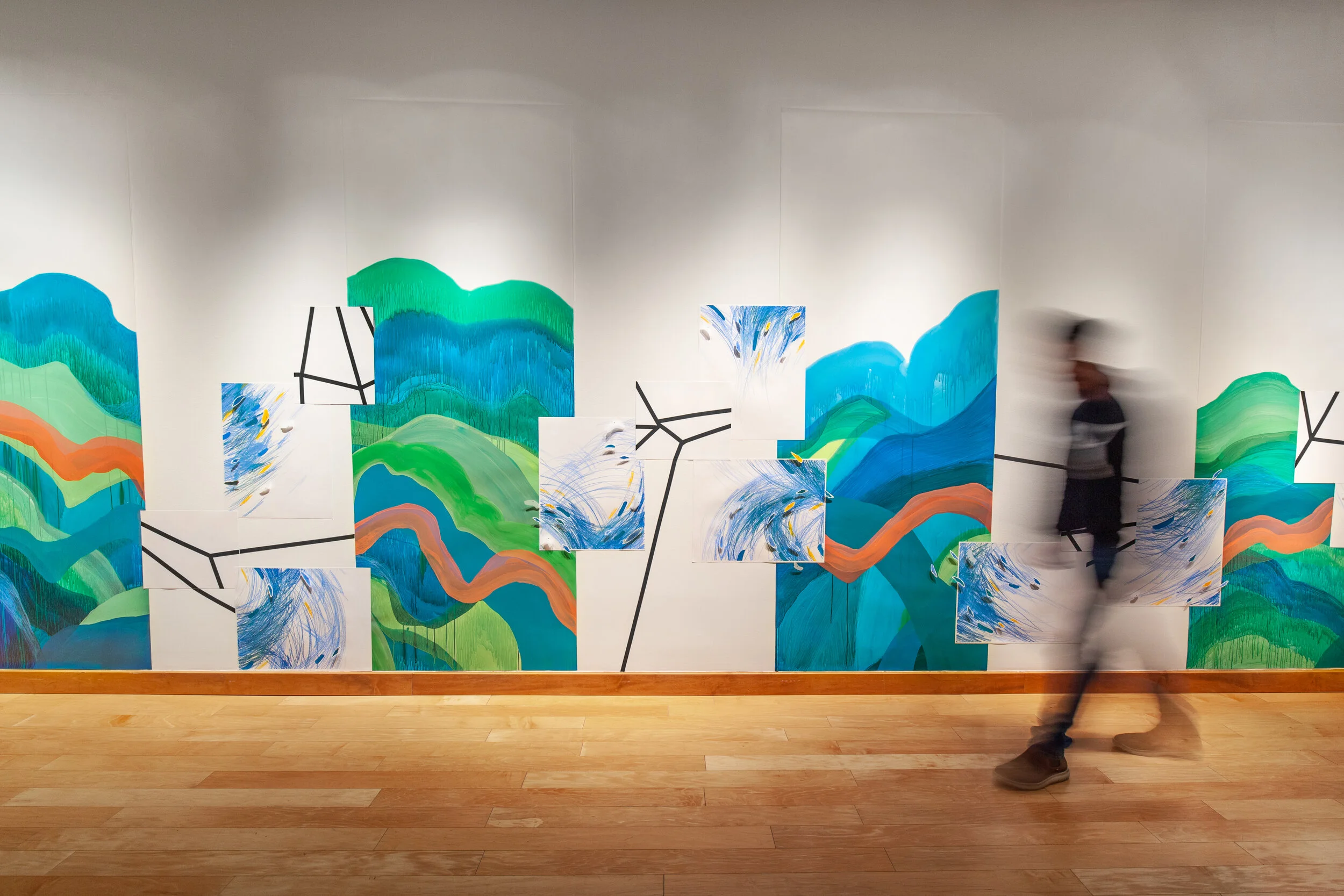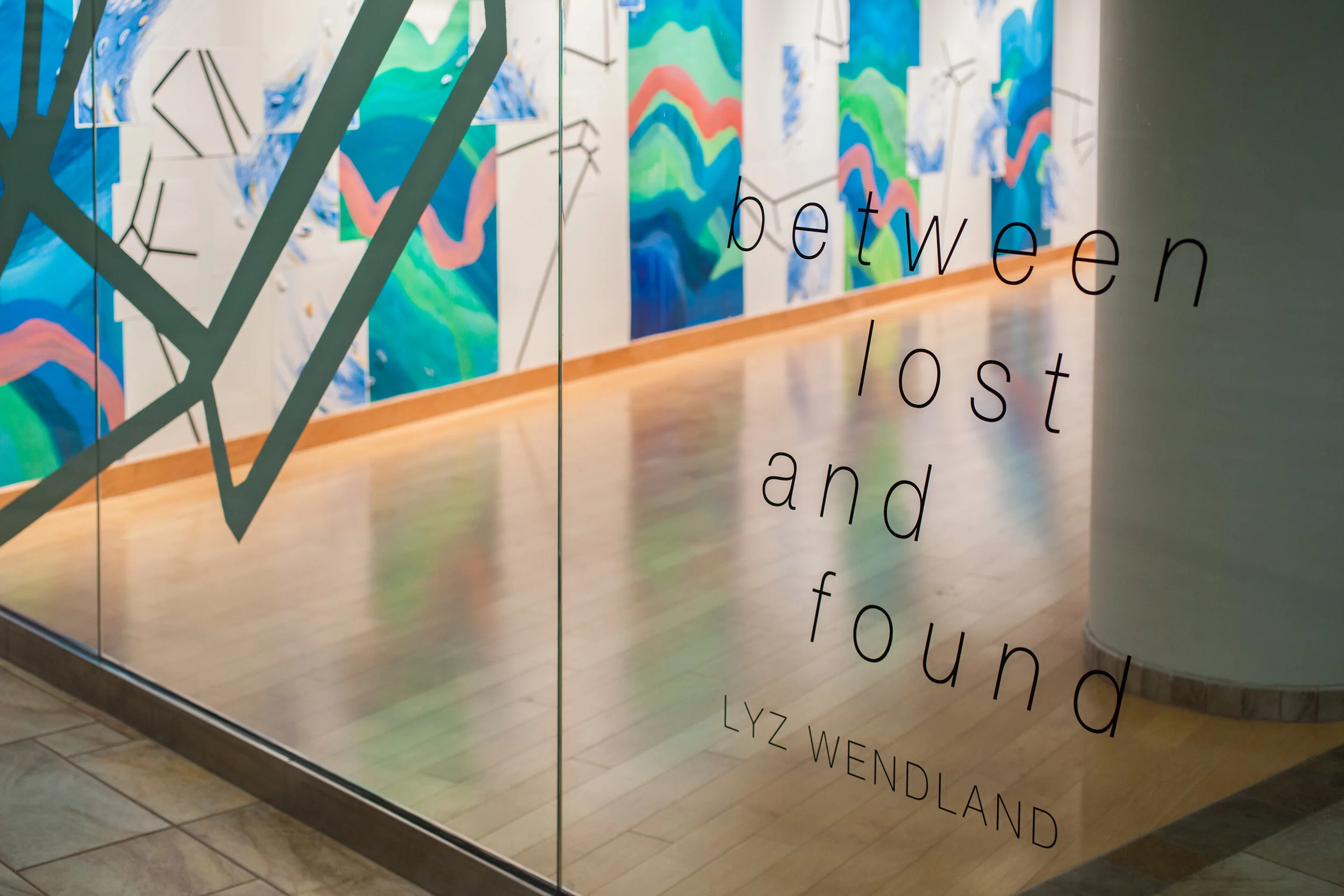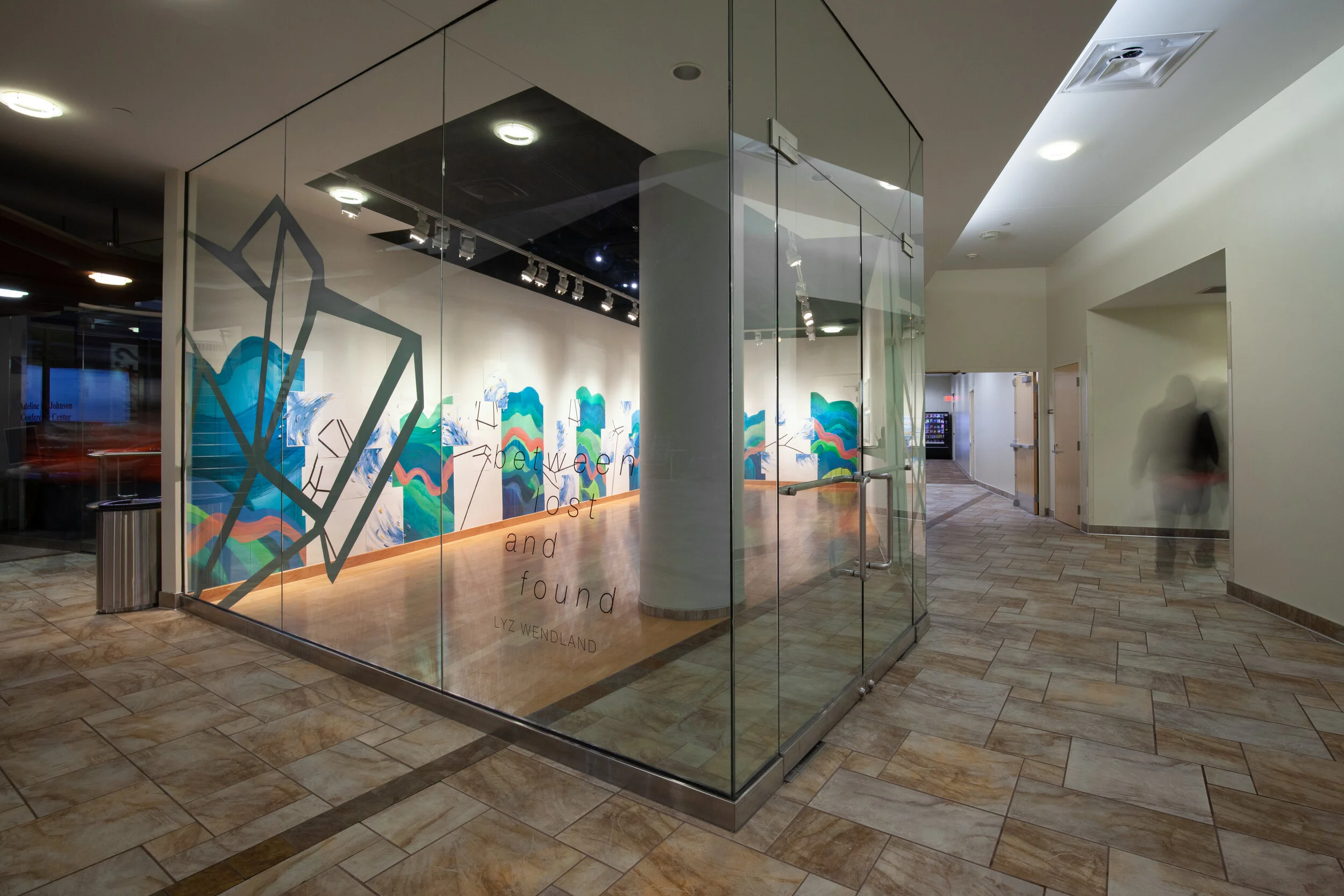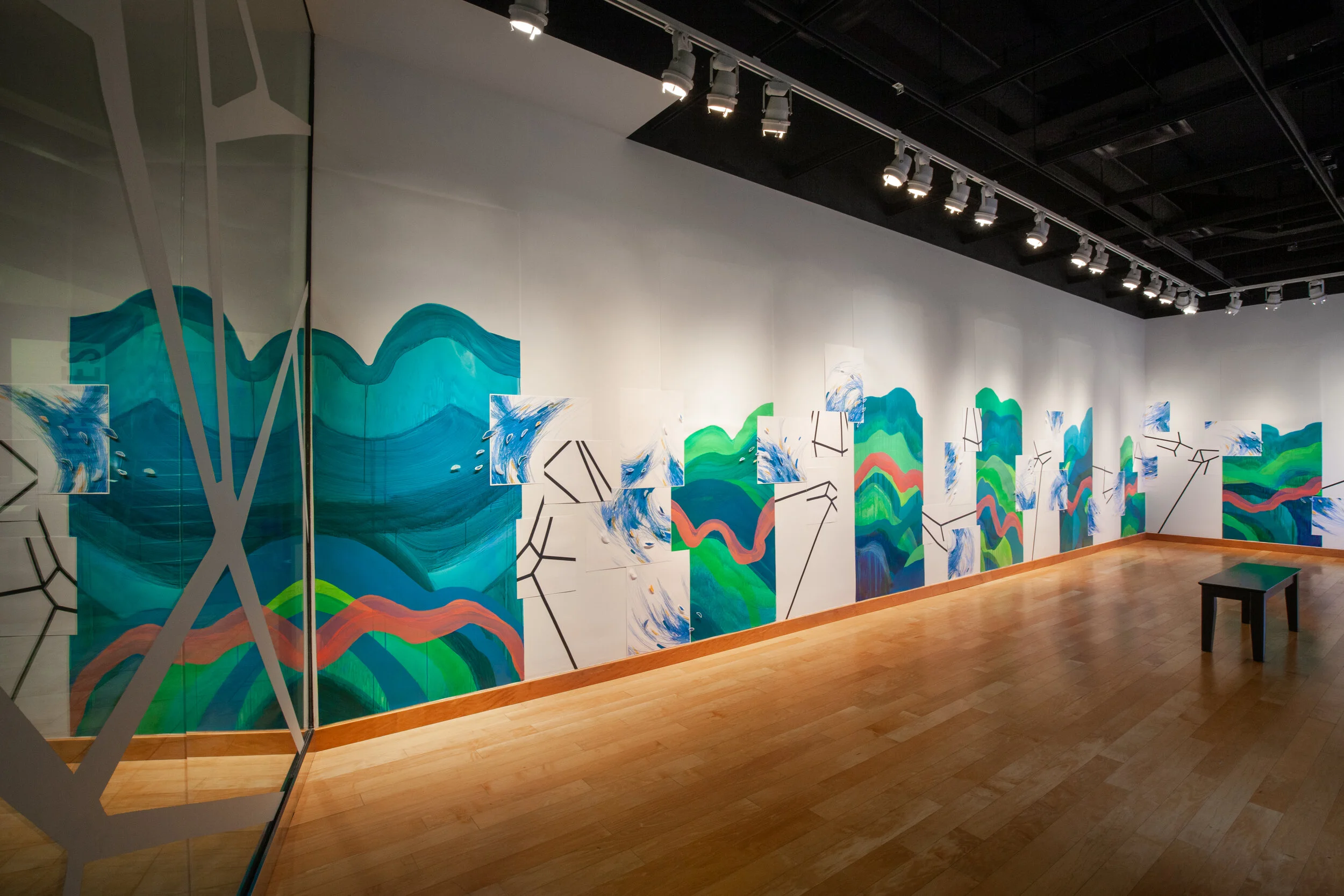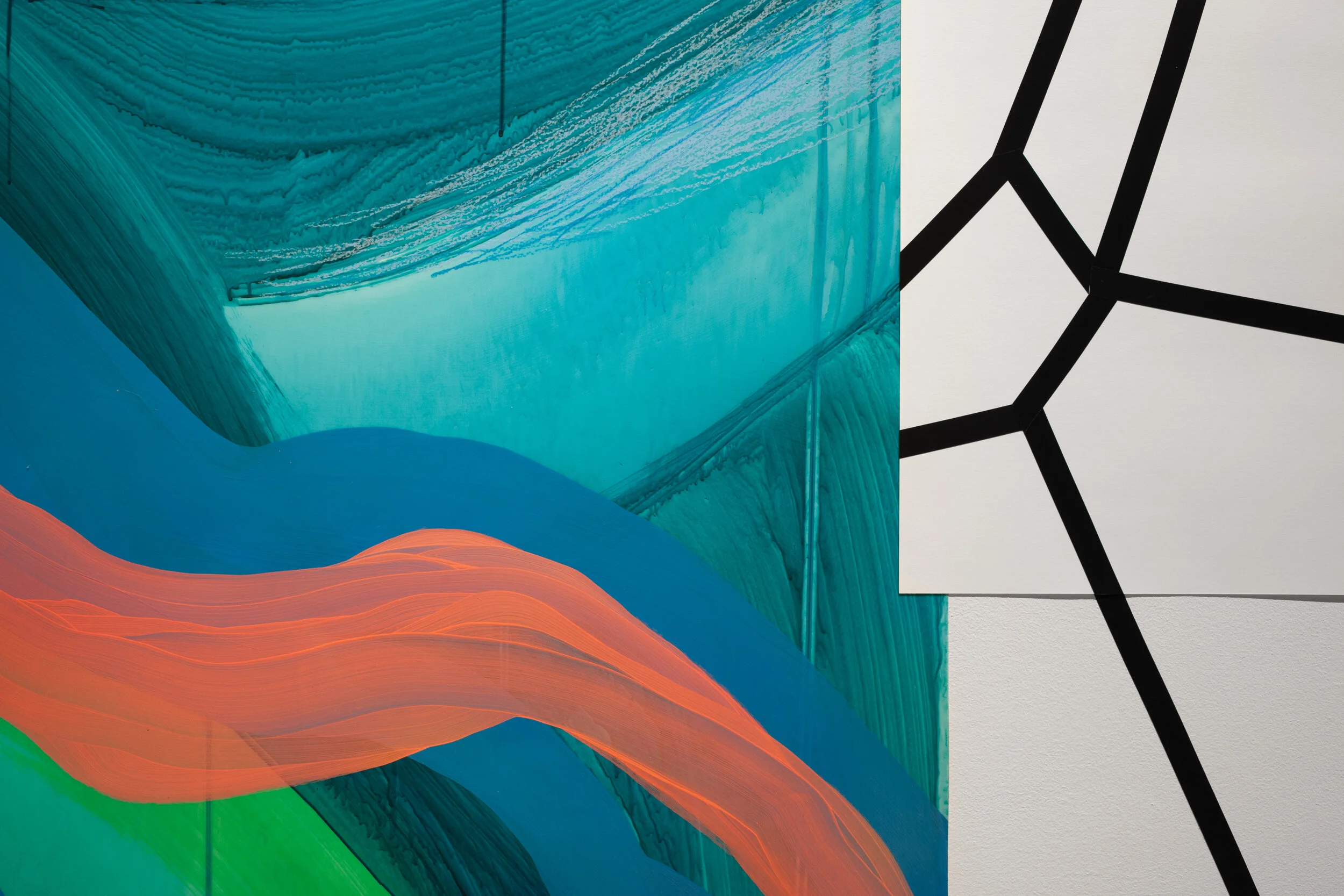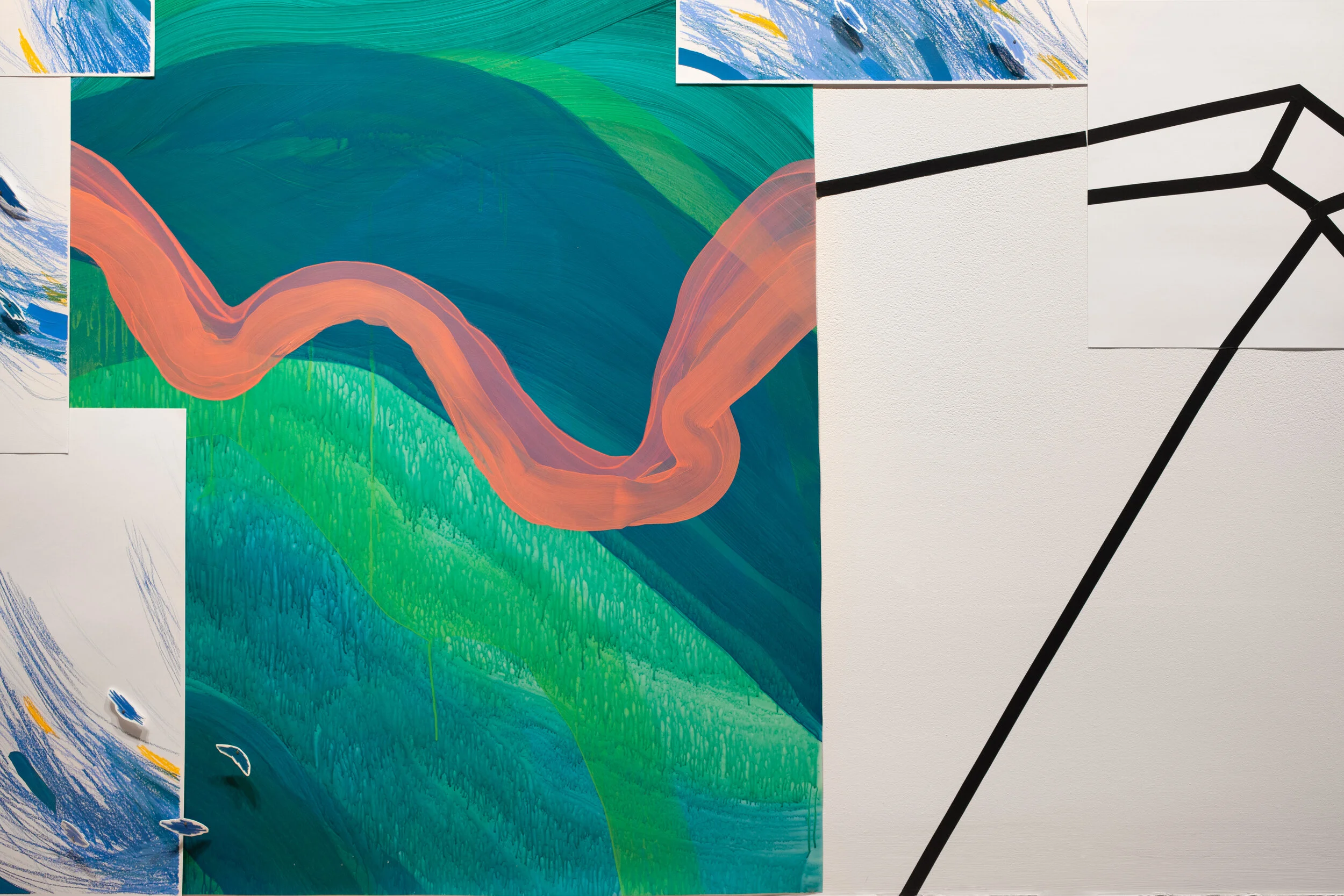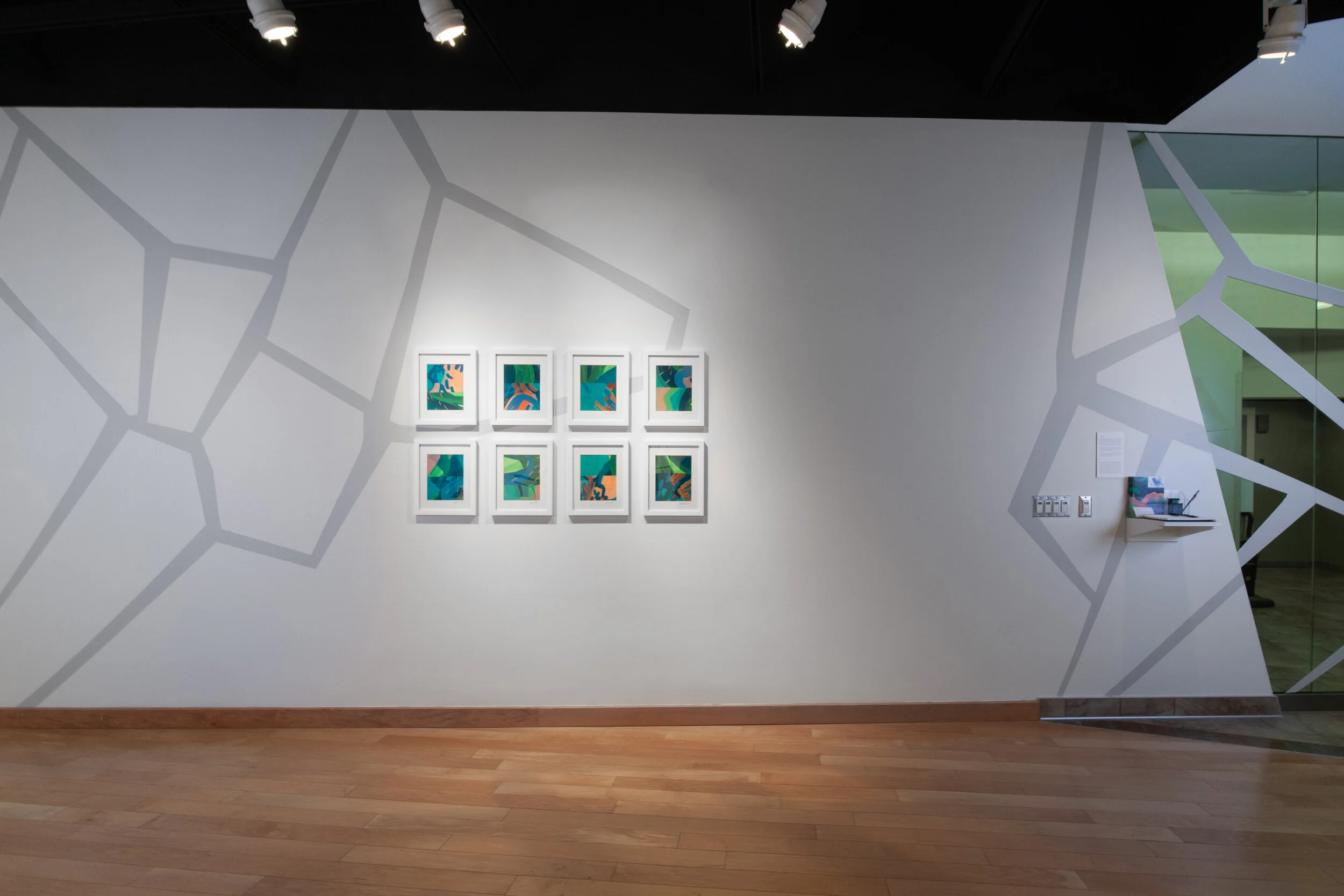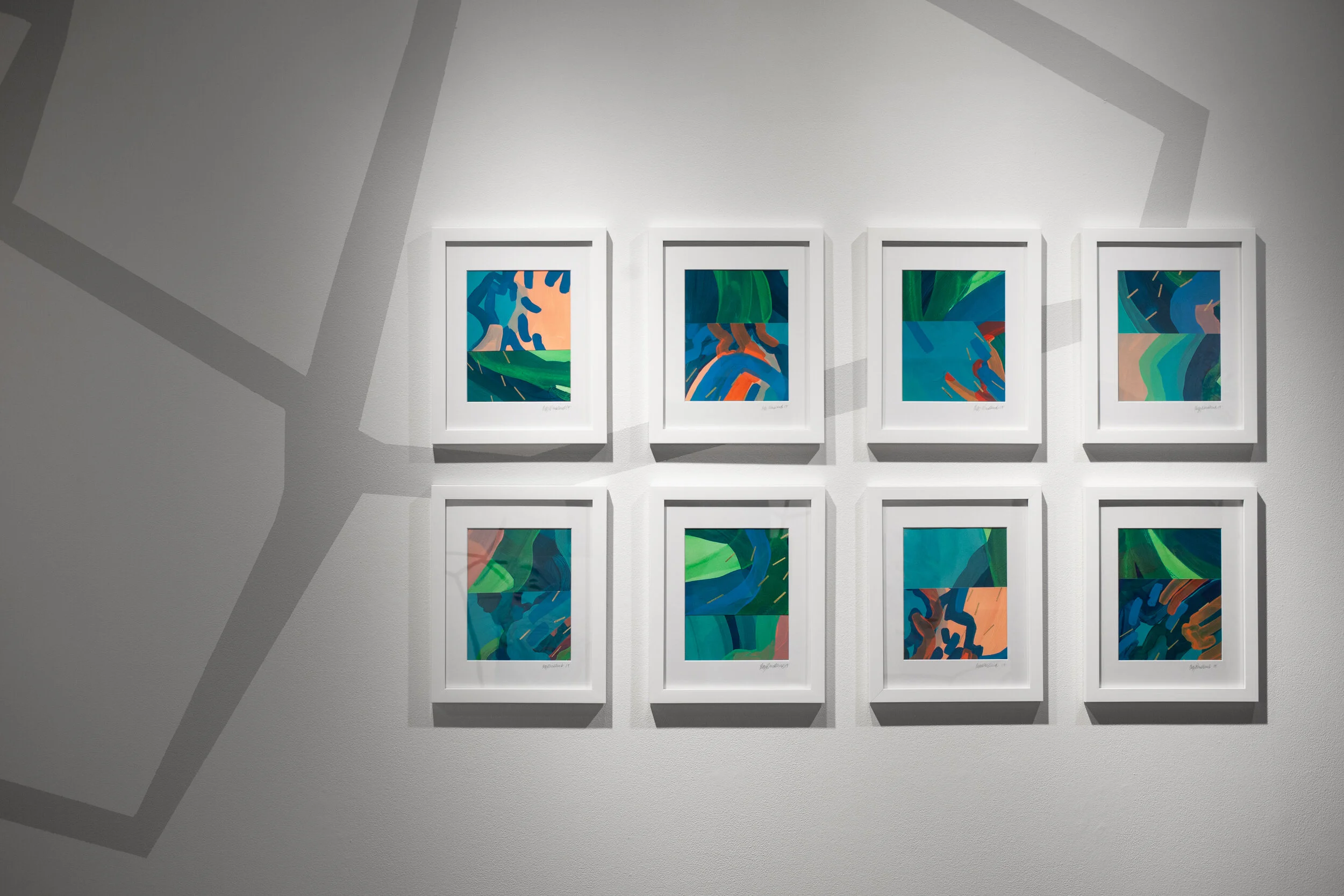Between Lost & Found
“I can resist anything but temptation.” - Oscar Wilde
Everybody loves a good paradox. And to understand a paradox is to be in it, which means being situated between, and sometimes finding comfort within, ridiculous contradictions. Part of the pleasure baked into these witticisms is that it’s an irresolvable binary; this thing cannot be both true and false. Can it?
Lyz Wendland’s interest in landscape has been one of the thematic consistencies of her work and career. The paradox, as a statement with spatial, conceptual, and rhetorical contradictions, has become one of the primary devices she has deployed in recent work. And she uses them to reconcile the contrasting forms seen in her paintings, drawings, and murals in this exhibition, between lost & found.
When Wendland was younger, she trained herself to paint and draw with both hands; some tasks were better performed by one hand rather than the other, and it was easier to go back and forth depending on the assignment. This ambidexterity has become fully integrated into her practice but it also echoes how she oscillates between different formal vocabularies as well. Paradox Part 2, the largest piece in the exhibition,47’ feet long includes 8 [MOU1] acrylic painted Duralar panels that spans an entire gallery wall then bends to cover a smaller section. Each 100-inch-tall panel is covered with alternating waves of deep lapis and aqua blues, acidic apple greens, and bubblegum pinks. The panels are painted with bounding rhythms that resist and succumb to gravity; thick chalky swaths hold hard to the ground while watered-down pigments drip down slowly, recalling the striations of geologic time. Like Joan Mitchell’s biggest multi-panel landscapes, massive expanses that are punctuated with disruptions.
Extended time with this and other works in the exhibition will reveal how some of Wendland’s favorite artists make cameo appearances, such as how Morris Louis’s stained canvases are echoed in the paint drips and pools on her Duralar panels. Wendland and I talked at length about her connection to Helen Frankenthaler, especially the mural-sized paintings from the 1950s. Wendland uses a similar method when she paints loose wide-swathes rather than lines of color. Gravity and viscosity, instead of just brushwork, give her paint the agency to make its moves over and into the surface.
Wendland has carefully inserted a series of smaller wax [MOU2] pastel and tape drawings on paper in between each vertical panel. They’re both quick and deliberate, sketched and rendered, colored and monochromatic. These have evolved from her earlier abstract studies of suburban landscape and maps that were inspired by the neighborhoods in which she has lived. Here, they create formal contrasts between the paintings. It would be impossible to call these or any of Wendland’s works self-portraiture, but this exhibition, more than any other, is more personal since it encapsulates how she works. If you close one eye, Wendland is painting with a bounding and undulating pace, embracing chance and letting the paint do its thing. If you close another eye, you’ll see how she is drawing then collaging her abstract landscapes by setting an intention, embracing the grid and making repetitive marks. With both eyes open you’ll see how the works come together into a single composition in spite of their seemingly contradictory technical features.
Another facet that came out of our conversation is her interest in Japanese landscape paintings, especially the multi-panel paintings called byōbu (which translates to ‘wind screen’ or ‘wind wall’), which Wendland continues to explore. Byōbu screens were installed in Japanese buildings to take advantage of the post and lintel style that opened up long and wide continuous spaces. Like sumi-e painting, they are known for an economy of form that captures the essential purity and simplicity of nature, contrasting it with bold and atmospheric colors. Byōbu artists, and their compositions, asked viewers to think beyond the topographical features of a specific place towards an essence of nature and spirits of landscape.
During our studio visit, we discussed some of the reasons why between lost & found marks an important moment for Wendland’s career. Urban design, landscape, and geometric abstraction are the topics she has hewn closely to since her graduate studies. And she has been researching and speaking about the environment for many years as well. But this exhibition is where she has taken a more direct stance on debates (and arguments) related to global climate change. The challenge for an artist is how to avoid illustrating the problem while contributing meaningfully to such a polarizing topic. Wendland began this project by asking herself some important questions, for example: what portions of the landscape can be saved when so much has already been lost (due to forest fires, draught, and floods)? Wrestling with this and other questions are an ongoing concern since they don’t end tidy answers. The affect Wendland is striving for, in fact, is for visitors to be caught in that uncomfortable paradox of knowing that something must be done but not sure how to do it or who to ask for help. And to enforce her commitment, Wendland has pledged to donate the sales of her Reflections paintings to the Augsburg Urban Arboretum
Wendland’s skills as an installation artist are on full display here, especially how she has composed and arranged her paintings and works on paper. The mural of painted glass wall panels, Intersectional Fragments, is a site-specific work that also serves as a ground for her framed Reflection paintings. The title is a reference to her previous drawn and sculptural studies of architecture and landscape design. It’s an abstracted visual language she created to better express the tenuous relationship she has between space that is built and space that grows. Each of the massive geometric shapes also appear in Paradox Part 2 but are smaller and broken into fragments. By painting over the glass walls, Wendland’s installation focuses visitor attention inwards, in such a way to remove distractions and see how her integration of works in other works reverberates around the room.
It has been said there is no artwork that is as powerful as the image it creates in our imagination. This sort of experience can only be possible by giving over to the artwork. How is it, after all, that we are moved to action, whether it be joy, sadness, or anger by a painting or a work of fiction? The exercise of unpacking a paradox such as this makes an important point: whether comical or tragically ironic, this confusing space betwixt terms is a moment of understanding and meaning-making that testing the limits of language.
Installation photography by Jacinda Davis
